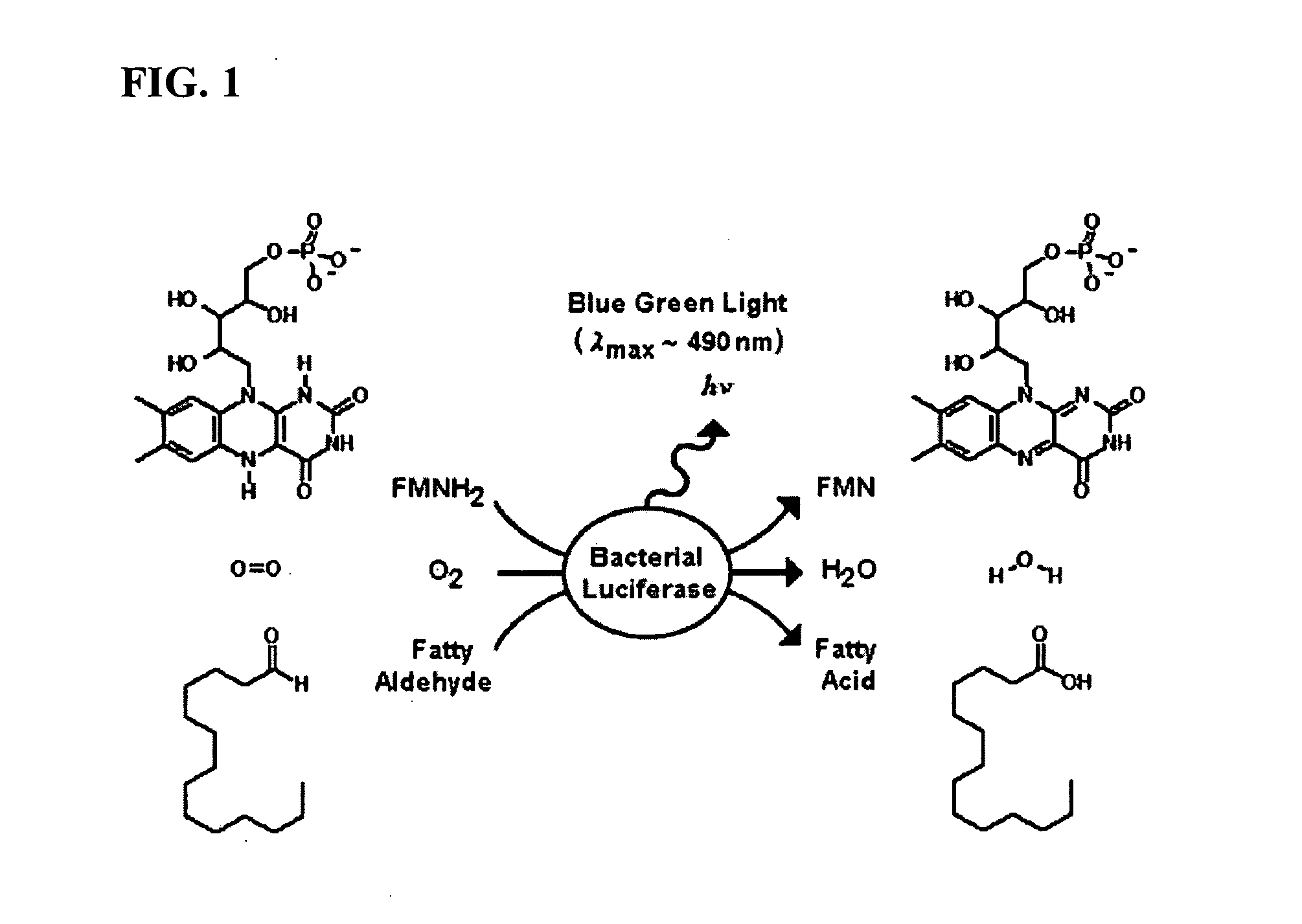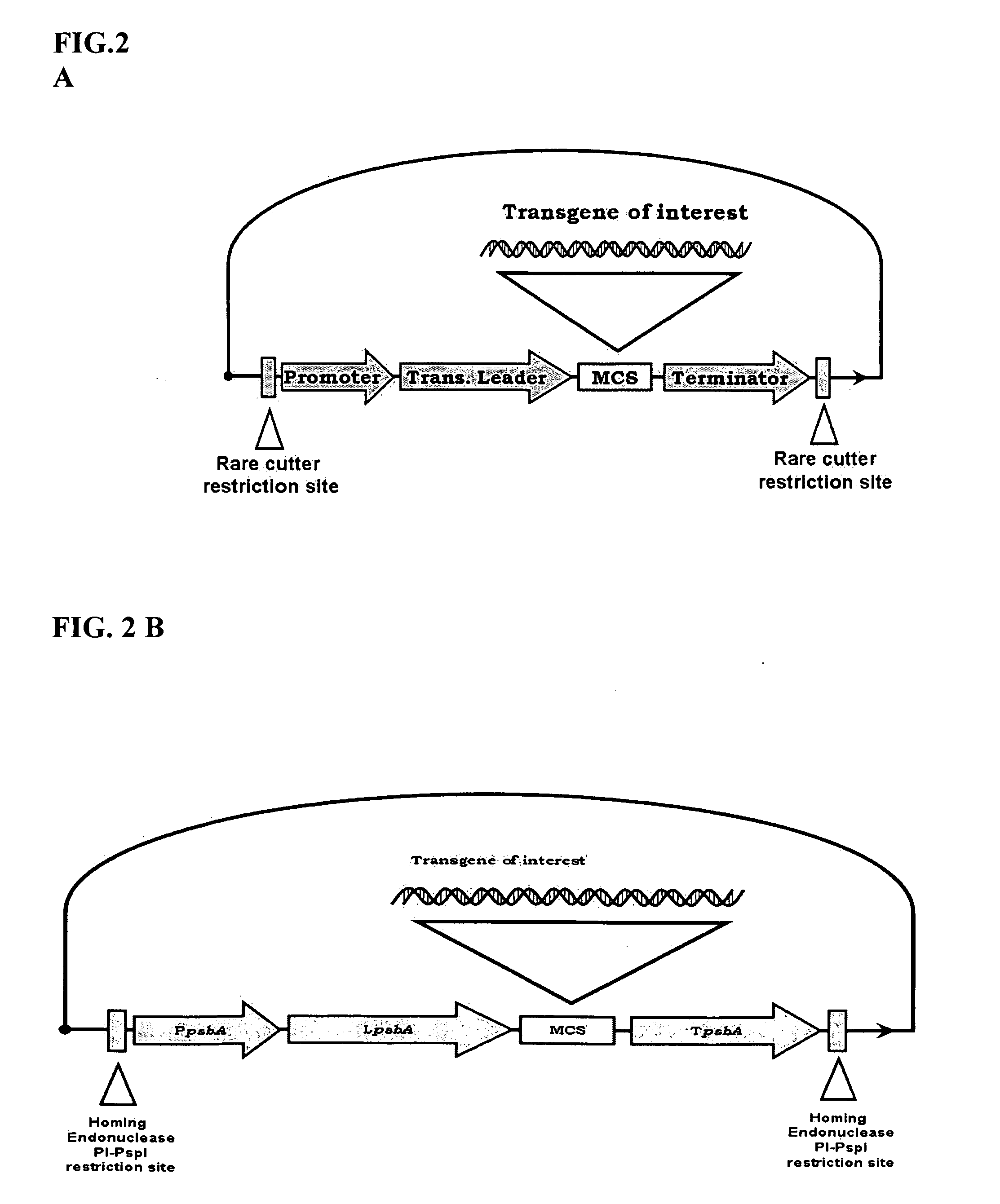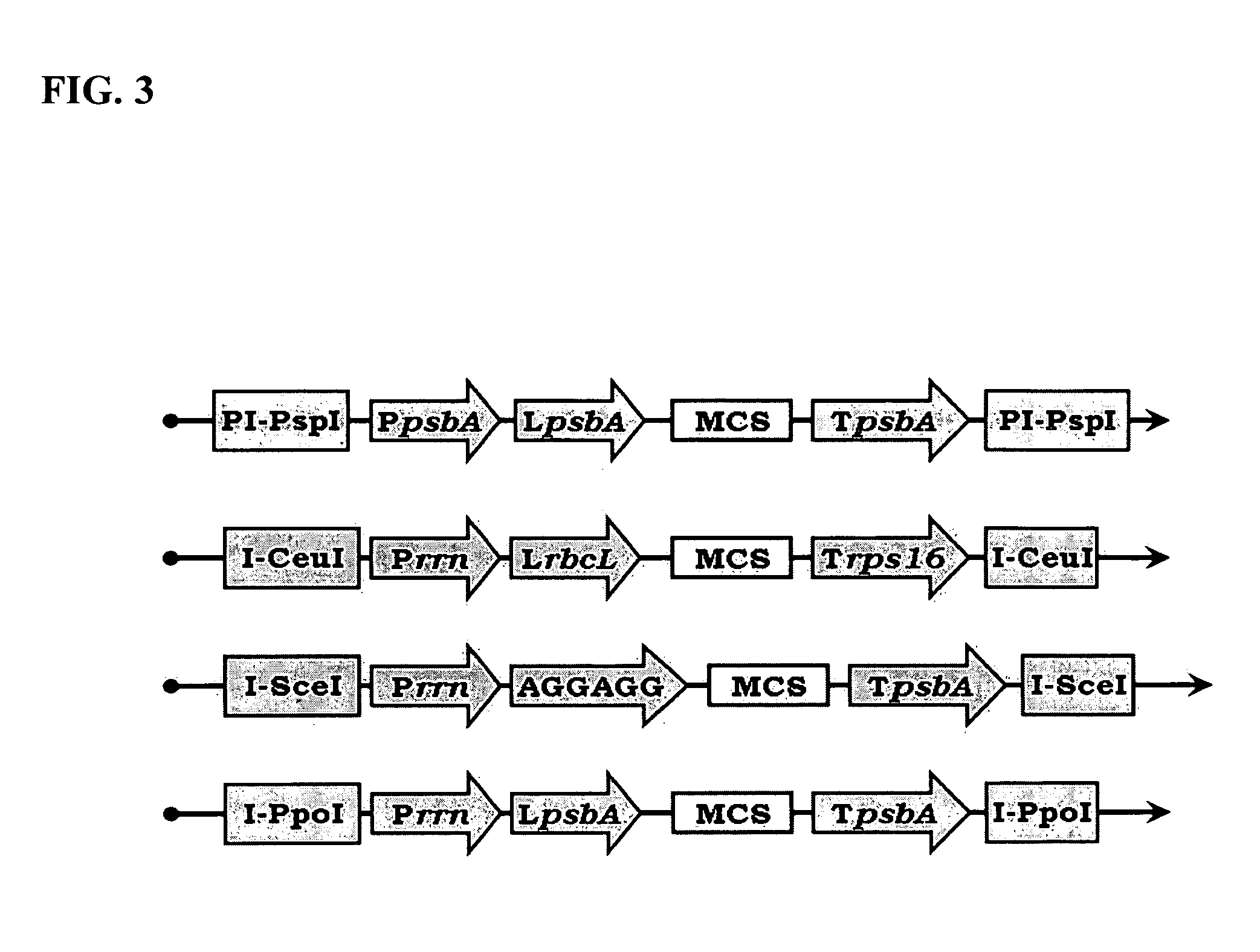Bioluminescent Plants Comprising Bacterial Lux Operon and Methods of Making Same
a technology of lux operon and bioluminescent plants, which is applied in the field of bioluminescent plants comprising lux operon, can solve the problems of limited plant genetic engineering, inability to readily achieve organisms, and inability to incorporate complex metabolic pathways,
- Summary
- Abstract
- Description
- Claims
- Application Information
AI Technical Summary
Benefits of technology
Problems solved by technology
Method used
Image
Examples
example 1
[0162]Cloning pUniPlast Vector
[0163]A donor vector, pSat1 vector (vector used for genomic plant DNA transformation (Tzfira, et al. 2005), is digested with AscI restriction enzyme. Blunt ends are then created with Mung Bean nuclease (New England Biolabs). A pUniPlast (acceptor vector) multiple cloning site is blunt cloned with annealed primers BG-1 and BG-2. The resulting construct is then sequenced with primers BG-3 and 4.
[0164]The trnI (approx. 1,240 bp) homologues recombination targeting sequence is amplified by polymerase chain reaction (PCR) using Pfu polymerase (Stratagene), tobacco plastid DNA as a template and primers BG-5 and 6. The trnI is then cloned with AscI / I-CeuI to maintain insert directionality (double digest in NEB buffer 4).
[0165]The trnA (approx. 830 bp) homologues recombination targeting sequence is amplified by polymerase chain reaction (PCR) using Pfu polymerase, tobacco plastid DNA as a template and primers BG-7 and 8. The trnA sequence is then cloned with Fse...
example 2
[0167]Preparing a pCas-1 Vector Containing I-CeuI Derived PpsbA / LpsbA / TpsbA Expression Cassette
[0168]A PpsbA promoter (approx. 230 bp) is amplified by PCR using Pfu polymerase, using tobacco plastid DNA as a template and primers BG-9 and 10. The PCR product is then digested with AgeI / NcoI enzymes.
[0169]The pSat5 (vector used for genomic plant DNA transformation, see Tzfira et al (2005) (donor vector) is then digested with AgeI / NcoI to remove a 35S promoter. The backbone of the vector and the PpsbA promoter is then ligated using T4 DNA ligase (New England Biolabs).
[0170]A TpsbA terminator (approx. 400 bp) is amplified by PCR using Pfu polymerase, tobacco plastid DNA as a template, and primers BG-11 and 12. The PCR product is then digested with NotI / XbaI.
[0171]The pSat5—PpsbA promoter is digested with NotI / XbaI to remove a 35S terminator (note: may need to use INV 110 to prevent XbaI site methylation). The TpsbA terminator is then cloned into the pSAT5-PpsbA promoter vector. From now ...
example 3
[0178]Preparing pCas-2 vector containing PI-PspI derived PpsbA / LpsbA / TpsbA Expression Cassette
[0179]A pCas-2 vector (donor vector) is made following the same steps above as for pCas-1 vector. Plasmid pSat6 (vector used for genomic plant DNA transformation, see Tzfira et al (2005)) (donor vector) is used as a basis vector to create pCas-2.
[0180]Several different expression cassettes may be required to express multiple genes in plastids, and thus several different pCas vectors (donor vectors) must be made. For example, pCas-1 will be employed to subclone LUX operon (NCBI accession: M63594) into pUniPlast (acceptor vector) for generation of bioluminescent transgenic plants.
[0181]However, if additional genes need to be introduced into the same pUniPlast (acceptor) vector for simultaneous transformation into plastid genome, an additional pCas vector (donor vector), such as pCas-2 or pCas-3, might be required.
[0182]For example, RIB operon genes (GeneBank accession AF364106) encoding for t...
PUM
| Property | Measurement | Unit |
|---|---|---|
| elongation time | aaaaa | aaaaa |
| bioluminescent | aaaaa | aaaaa |
| bioluminescence | aaaaa | aaaaa |
Abstract
Description
Claims
Application Information
 Login to View More
Login to View More - R&D
- Intellectual Property
- Life Sciences
- Materials
- Tech Scout
- Unparalleled Data Quality
- Higher Quality Content
- 60% Fewer Hallucinations
Browse by: Latest US Patents, China's latest patents, Technical Efficacy Thesaurus, Application Domain, Technology Topic, Popular Technical Reports.
© 2025 PatSnap. All rights reserved.Legal|Privacy policy|Modern Slavery Act Transparency Statement|Sitemap|About US| Contact US: help@patsnap.com



